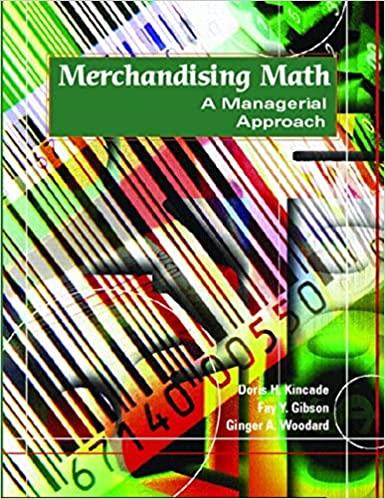Answered step by step
Verified Expert Solution
Question
1 Approved Answer
PLEASE DO ALL PARTS (part 2 to part 7) Exercise 7-21B Complete the accounting cycle using long-term asset transactions (L07-4, 7-7) (The following information applies












PLEASE DO ALL PARTS (part 2 to part 7)
Exercise 7-21B Complete the accounting cycle using long-term asset transactions (L07-4, 7-7) (The following information applies to the questions displayed below.) On January 1, Year 1, the general ledger of a company includes the following account balances: Credit Debit $ 60,500 28,600 $ 4,000 Accounts Cash Accounts Receivable Allowance for Uncollectible Accounts Inventory Notes Receivable (5%, due in 2 years) Land Accounts Payable Common Stock Retained Earnings Totals 38,100 33,600 173,000 16,600 238,000 75,200 $333,800 $333,800 During January Year 1, the following transactions occur: January 1 Purchase equipment for $21,300. The company estimates a residual value of $3,300 and a six-year service life. January 4 Pay cash on accounts payable, $11,300. January 8 Purchase additional inventory on account, $100,900. January 15 Receive cash on accounts receivable, $23,800. January 19 Pay cash for salaries, $31,600. January 28 Pay cash for January utilities, $18,300. January 30 Sales for January total $238,000. All of these sales are on account. The cost of the units sold is $124,000. Information for adjusting entries: a. Depreciation on the equipment for the month of January is calculated using the straight-line method. b. The company estimates future uncollectible accounts. The company determines $4,800 of accounts receivable on January 31 are past due, and 50% of these accounts are estimated to be uncollectible. The remaining accounts receivable on January 31 are not past due, and 2% of these accounts are estimated to be uncollectible. (Hint: Use the January 31 accounts receivable balance calculated in the general ledger.) c. Accrued interest revenue on notes receivable for January d. Unpaid salaries at the end of January are $34,400. e. Accrued income taxes at the end of January are $10,800. Exercise 7-21B Part 2 2. Record the adjusting entries on January 31 for the above transactions. (If no entry is required for a particular transaction/event, select particular "No Journal Entry Required" in the first account field.) View transaction list Journal entry worksheet 2 3 4 5 Depreciation on the equipment for the month of January is calculated using the straight-line method. Record the adjusting entry for depreciation. Note: Enter debits before credits. Date General Journal Debit Credit January 31 Record entry Clear entry View general journal 1 Depreciation on the equipment for the month of January is calculated using the straight-line method. Record the adjusting entry for depreciation. 2 The company estimates future uncollectible accounts. The company determines $4,800 of accounts receivable on January 31 are past due, and 50% of these accounts are estimated to be uncollectible. The remaining accounts receivable on January 31 are not past due, and 2% of these accounts are estimated to be uncollectible. (Hint: Use the January 31 accounts receivable balance calculated in the general ledger.) Record the adjusting entry for uncollectible accounts. 3 Accrued interest revenue on notes receivable for January. Record the adjusting entry for interest. 4 Unpaid salaries at the end of January are $34,400. Record the adjusting entry for salaries. 5 Accrued income taxes at the end of January are $10,800. Record the adjusting entry for income tax. Exercise 7-21B Part 3 3. Prepare an adjusted trial balance as of January 31, Year 1. Adjusted Trial Balance January 31, Year 1 Accounts Debit Credit Exercise 7-21B Part 4 4. Prepare a multiple-step income statement for the period ended January 31, Year 1. Multiple-Step Income Statement For the month ended January 31, Year 1 Expenses Total Operating Expenses Exercise 7-21B Part 5 5. Prepare a classified balance sheet as of January 31, Year 1. (Deductible amounts should be indicated with a minus sign.) Balance Sheet January 31, Year 1 Assets Liabilities Total Current Liabilities Total Current Assets Stockholder's Equity Total Stockholders' Equity Total Liabilities and Stockholders' Equity Total Assets Exercise 7-21B Part 6 6. Record closing entries. (If no entry is required for a particular transaction/event, select "No Journal Entry Required" in the first account field.) View transaction list 1 Record the closing entry for revenues. 2 Record the closing entry for expenses. Exercise 7-21B Part 7 7. Analyze how well the company manages its assets: Requirement 1: a-1. Calculate the return on assets ratio for the month of January. Return on Assets Ratio Choose Numerator -10 Choose Denominator Return on Assets Ratio + Return on assets + a-2. If the average return on assets for the industry in January is 2%, is the company more or less profitable than other companies in the same industry? O More profitable O Less profitable Requirement 2: b-1. Calculate the profit margin for the month of January. Profit Margin Choose Denominator Choose Numerator = Profit Margin Profit Margin b-2. If the industry average profit margin is 5%, is the company more or less efficient at converting sales to profit than other companies in the same industry? More efficient O Less efficient Requirement 3: C-1. Calculate the asset turnover ratio for the month of January. Asset Turnover Ratio Choose Numerator -- Choose Denominator Asset Turnover Ratio Asset Turnover times c-2. If the industry average asset turnover is 0.4 times per month, is the company more or less efficient at producing revenues with its assets than other companies in the same industry? More efficient O Less efficientStep by Step Solution
There are 3 Steps involved in it
Step: 1

Get Instant Access to Expert-Tailored Solutions
See step-by-step solutions with expert insights and AI powered tools for academic success
Step: 2

Step: 3

Ace Your Homework with AI
Get the answers you need in no time with our AI-driven, step-by-step assistance
Get Started


